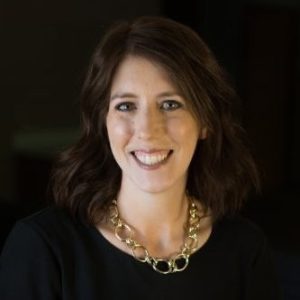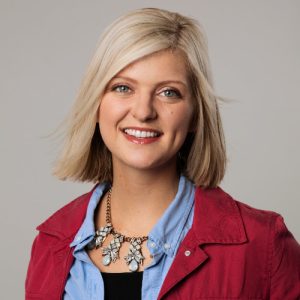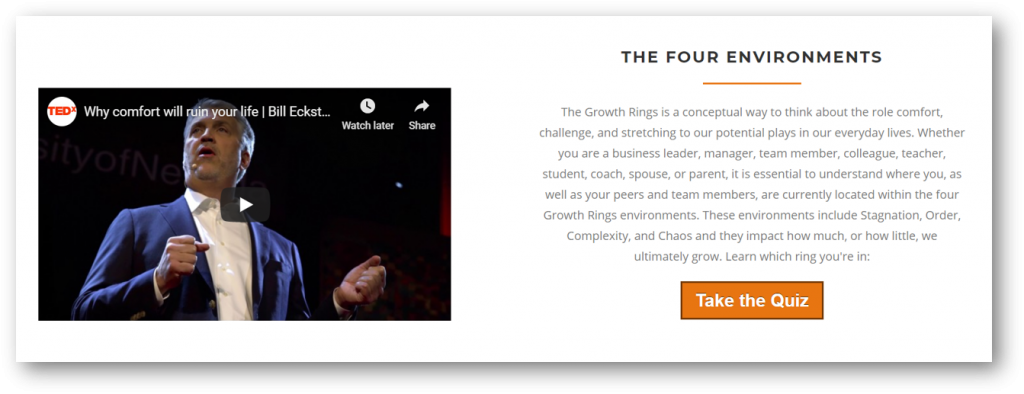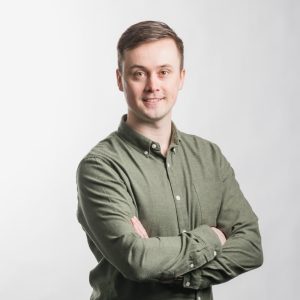When people look for professional or personal coaching, it can be hard to discover what differentiates one agency from the others and what type of results they can expect.
We had the pleasure of talking with Stacia Jorgensen and Anna Schott from the EcSell Institute. They showed us how they innovate by offering people a first insight even before being in touch with someone from the company.
After they noticed the surge of traffic from their viral TEDx Talk video, EcSell Institute created the Growth Rings Quiz. A coaching assessment with a personalized PDF report that brought in over 800 new leads just from sitting on their website without any additional marketing efforts!
Here’s how they did it.
Who are Anna and Stacia and what do they do at the EcSell Institute?
The EcSell Institute helps organizations and leaders elevate their coaching or leadership effectiveness in order to drive increased performance for their teams. They help make it more common for individuals in an organization to know what great leadership feels like.
Stacia Jorgensen is the Director of Research, who leads all initiatives that involve data and reporting.
And Anna is the Director of Marketing who is responsible for strategizing and implementing the organization’s marketing campaigns. They created the Growth Rings Quiz, a coaching assessment with a personalized report for each respondent. The report is aimed to give insights into your current work and life experiences within the Growth Rings continuum and what this might mean for your professional and personal development.
The idea behind the coaching assessment is that a website visitor answers a short set of personal questions that will return a very specific outcome or result. With that result, both them and the coach will gain greater insight into where they stand at the moment, what type of coaching sessions would work best and what they can do to grow.
What sparked the idea for the growth rings quiz?
Stacia: “After the viral TEDx Talk “Why Comfort Will Ruin Your Life” by our colleague Bill Eckstrom, our organization realized that the concepts included in the talk, specifically the Growth Rings, really resonated with people and hit on elements and experiences that have a profound impact on individuals.
The Growth Rings Indicator (GRI) grew out of discussions we have had with individuals who want to better understand how their environment hinders or helps their performance.”
Anna: “We realized we should have created the quiz before the video went live… But in our case, we transformed the entire idea behind the TEDx Talk into a coaching assessment afterward. That test can tell people where they’re currently situated within that Growth Ring continuum.”
Who are you trying to reach with your coaching assessment?
Stacia: “Individuals can use the GRI to better understand how their environments play a role in their personal and professional growth. When you better understand what growth ring you are in, you can better make decisions and look for opportunities that either challenge you or give you stability.
Team leaders can use the GRI has a way to better understand how to best coach each person on their team to maximize their potential. It’s also a great development or team-building tool when used in combination with our Growth Rings Indicator Team Development Guide.”
How did you execute your idea?
Stacia: “The GRI was developed as an extension of the TEDx Talk and the recent release of Bill Eckstrom’s book The Coaching Effect co-authored with Sarah Wirth.
After doing extensive searches (including talking with numerous colleagues) we found Pointerpro. It is the one platform we found that had the flexibility we needed to create a customizable and professional PDF report, based on the answers respondents gave to the Growth Rings Indicator.”
Anna: “We all formulated an idea of what we thought the quiz should look like. We compared what kind of assessments we’d taken in the past and what we liked and disliked about them.
For us it was important that we decided on the end-goal of the assessment first. (What should the report and outcomes look like?) And then start to formulate our questions around that goal.”
What was your main goal for the coaching assessment?
Stacia: “Our main goal was to create a report that people felt spoke to their experiences. And that provided useable insights to help them grow and develop.
These reports describe the Growth Ring the respondent’s answers indicate they are currently in. It also provides suggestions to help the individual maximize their Growth Rings experience.”
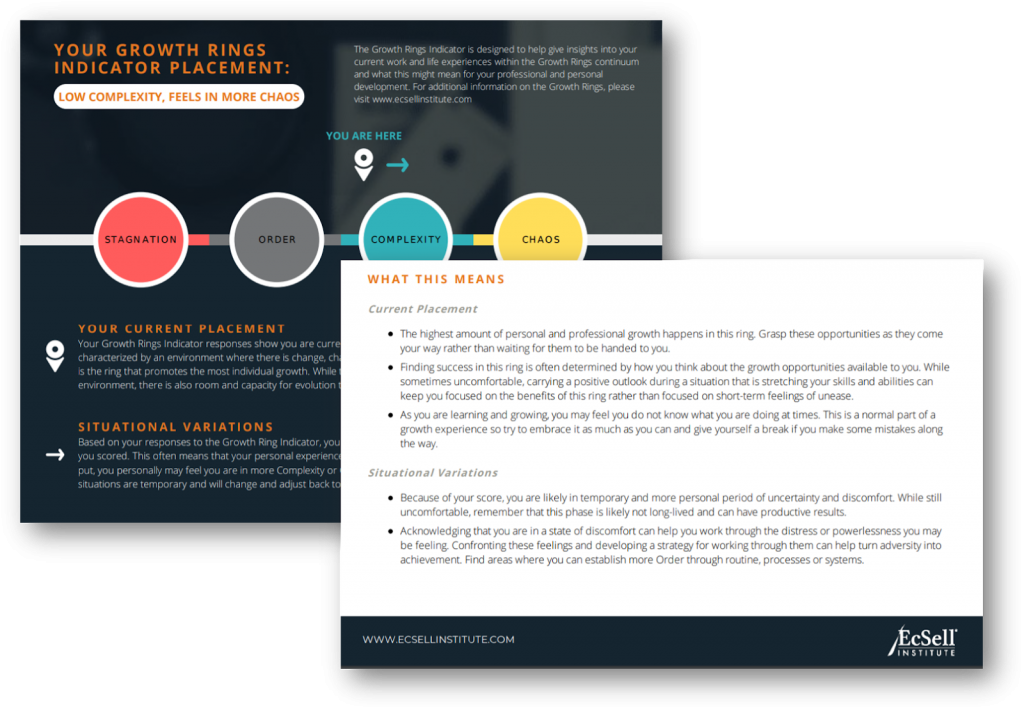
Anna: “From a marketing perspective, we built the assessment as a way of capturing some of the traffic that was coming from the TEDx video. We noticed this incredible surge in website visitors that weren’t finding any resources to complement the talk they had just seen.
With the quiz, we wanted to offer them a first insight into their own personal results and capture their contact data for further follow-up.”
How are you promoting the growth ring indicator?
Anna: “There are so many opportunities to grow with this assessment. At the moment, I’m the only one running the entire marketing for EcSell Institute. I know for a fact that we haven’t explored all the options to bring this to the market just yet. But this is what we’re doing at the moment.
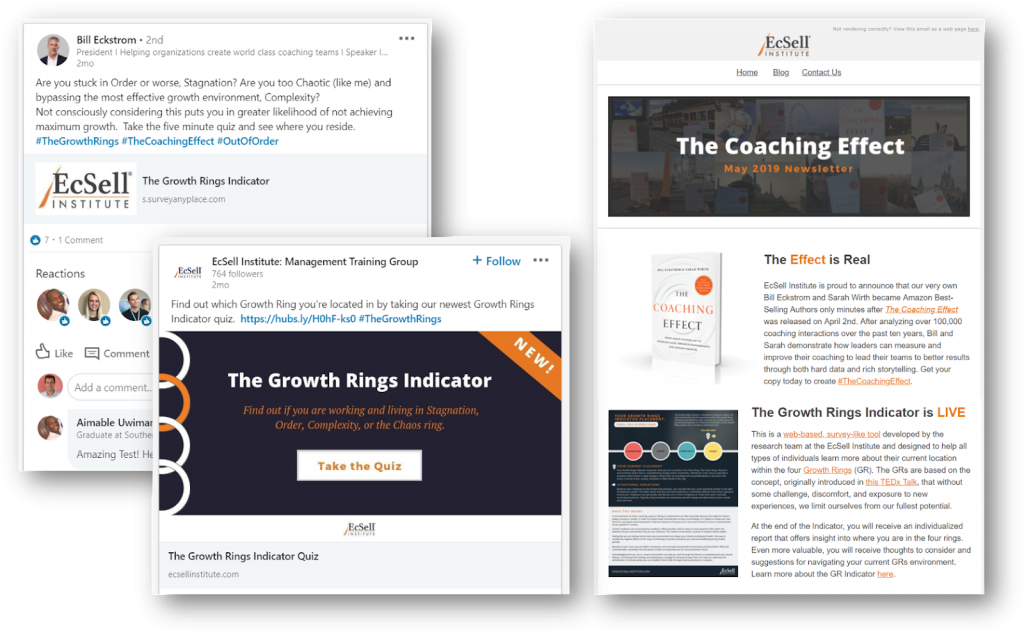
- Stacia will email me two times a month with the latest list of respondents. These are then added to our CRM-system and sent more information about the Growth Rings after that. For example, we are now creating a guide that respondents can use as a follow-up to their initial results. With questions they can use in group settings etc.
- Because of the popular video, we see a lot of direct traffic coming from people who watched or looked for the TEDx talk that are simply Googling the Growth Rings. So I made sure that the landing page was optimized for SEO to capture as much of that search traffic as possible.
- We’re actively promoting the quiz as a call to action at the bottom of our blog posts. There are social media posts, newsletters and we’re sharing it with our clients as well.
- What I’d love to see going forward is having video testimonials of people that have taken the quiz explaining how it has helped them in their daily lives and create ebooks around the results and testimonials.”
What results are you getting so far?
Anna: “We have seen a lot of successes specifically with businesses that are using it for their employees. It helps team leaders and managers better understand where their employees are at. If a manager sees that his employee is currently in “High Complexity”, they might decide to not push a new project on that employee at the moment, for example.”
Stacia: “Additionally, the quantitative data that we are obtaining through the tool is helping us to better understand the Growth Rings concepts in more empirical ways. After enough people have taken the assessment, we’ll be able to get insights into how many people ended up in Stagnation or Complexity, for example. And that’s going to build a very rich database for us, which we are really excited about because there is still so much that we can explore about the Growth Rings.”
Anna: “From a marketing perspective, it is helping us build our email list like crazy!
When we first launched the coaching assessment we were also launching our first published book as well. So by the time the quiz was up and running, I was very surprised to see that people were finding their own way to the quiz. (We hadn’t even run a campaign at that point!)
We are now collecting contact data from people who might otherwise have watched the video and visited the website but who would not necessarily have found it useful to leave us their contact data. Even if they’re not looking for leadership coaching, for example, we now still have something for them. This has helped us collect over 100 responses already!”
What advice would you give others trying to make a (coaching) assessment?
Stacia: “Creating a tool such as this is an extensive process that can often be overwhelming. One piece of advice that I personally have for people taking on something like this is to make sure to take the time to think backwards.
What I mean by this is that it’s helpful, at some point, to think about what you’d like the final product to be and then work backwards to where you are starting. It’s easy to overlook a piece of data you need or hit an unexpected roadblock if you don’t work through what you absolutely must have at the end.”
Anna: “Touching back on us not having the quiz ready before the TEDx Talk, I know that we lost a lot of that initial traffic coming from the video to our website because we didn’t have anything in place to capture these people’s data or offer them some additional information.
So whenever you launch something new: Always think three steps forward in terms of what the consumer might need or look for after seeing a piece of your content and offer them an answer. In this case, in the shape of a coaching assessment.”
Feeling inspired?
With a couple of fairly simple questions, Stacia and Anna managed to connect the dots for their website visitors looking for more information on the Growth Rings talk. They provide them with useful information in addition to collecting valuable insights and contact data themselves!

